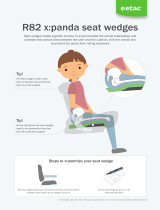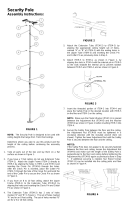Rifton K170 is a dynamic stander designed to help users who have no active use of trunk and leg muscles to stand. It enables a wide range of standing positions from full to no weight-bearing, allowing for hip development and accommodating leg braces. The stander's contoured body support and adjustable straps provide personalized positioning and support for the user, ensuring comfort and safety. Additionally, the Rifton K170 features rolling casters for easy maneuverability, making it suitable for various environments and activities.
Rifton K170 is a dynamic stander designed to help users who have no active use of trunk and leg muscles to stand. It enables a wide range of standing positions from full to no weight-bearing, allowing for hip development and accommodating leg braces. The stander's contoured body support and adjustable straps provide personalized positioning and support for the user, ensuring comfort and safety. Additionally, the Rifton K170 features rolling casters for easy maneuverability, making it suitable for various environments and activities.
















-
 1
1
-
 2
2
-
 3
3
-
 4
4
-
 5
5
-
 6
6
-
 7
7
-
 8
8
-
 9
9
-
 10
10
-
 11
11
-
 12
12
-
 13
13
-
 14
14
-
 15
15
-
 16
16
Rifton K170 is a dynamic stander designed to help users who have no active use of trunk and leg muscles to stand. It enables a wide range of standing positions from full to no weight-bearing, allowing for hip development and accommodating leg braces. The stander's contoured body support and adjustable straps provide personalized positioning and support for the user, ensuring comfort and safety. Additionally, the Rifton K170 features rolling casters for easy maneuverability, making it suitable for various environments and activities.
Ask a question and I''ll find the answer in the document
Finding information in a document is now easier with AI
Related papers
-
Rifton Mobile Stander User manual
-
Rifton Pacer S, M, L, XL Guide Bar User manual
-
Rifton Pacer Mini Guide Bar User manual
-
Rifton Adaptive Tricycle Stationary Stand User manual
-
Rifton Grab Bars & Anchors User manual
-
Rifton Support Station User manual
-
Rifton Compass Chair User manual
-
Rifton Blue Wave Toileting System User manual
-
Rifton New Size 1 Stander User manual
-
Rifton Wave User manual
Other documents
-
 R82 x:panda Operating instructions
R82 x:panda Operating instructions
-
EZ-ACCESS EZ-SHAMPOO Operating instructions
-
Leckey Footplate User manual
-
 Stander 1150-B Installation guide
Stander 1150-B Installation guide
-
 Rifton HTS Z130 User manual
Rifton HTS Z130 User manual
-
Hafele 807.77.071 User guide
-
Leckey Squiggles Stander User manual
-
smirthwaite P18789 Operating instructions
-
smirthwaite Lay Prone Instructions For Use Manual
-
Leckey Pronestander User manual


















